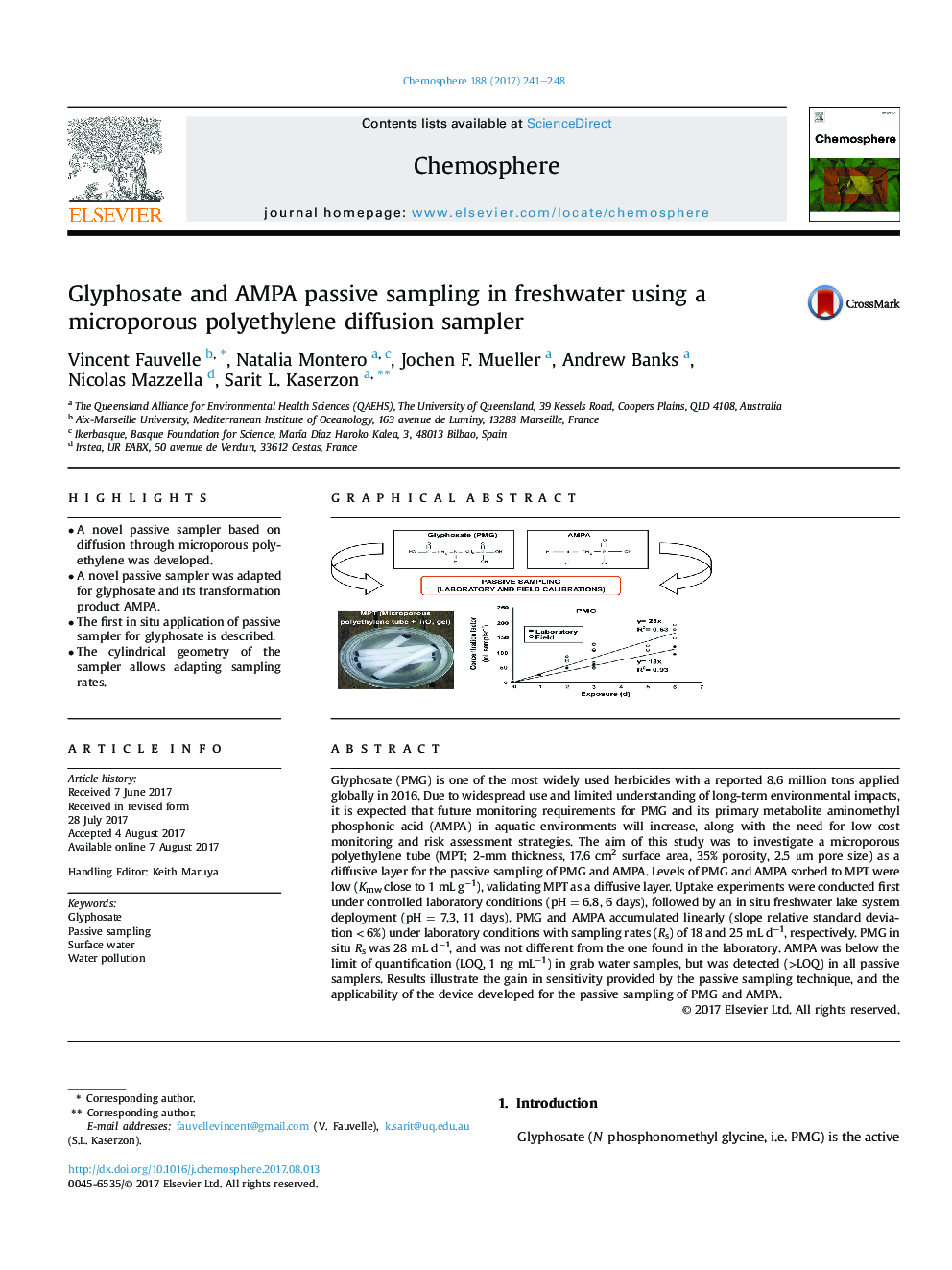| Article ID | Journal | Published Year | Pages | File Type |
|---|---|---|---|---|
| 5745808 | Chemosphere | 2017 | 8 Pages |
â¢A novel passive sampler based on diffusion through microporous polyethylene was developed.â¢A novel passive sampler was adapted for glyphosate and its transformation product AMPA.â¢The first in situ application of passive sampler for glyphosate is described.â¢The cylindrical geometry of the sampler allows adapting sampling rates.
Glyphosate (PMG) is one of the most widely used herbicides with a reported 8.6 million tons applied globally in 2016. Due to widespread use and limited understanding of long-term environmental impacts, it is expected that future monitoring requirements for PMG and its primary metabolite aminomethyl phosphonic acid (AMPA) in aquatic environments will increase, along with the need for low cost monitoring and risk assessment strategies. The aim of this study was to investigate a microporous polyethylene tube (MPT; 2-mm thickness, 17.6 cm2 surface area, 35% porosity, 2.5 μm pore size) as a diffusive layer for the passive sampling of PMG and AMPA. Levels of PMG and AMPA sorbed to MPT were low (Kmw close to 1 mL gâ1), validating MPT as a diffusive layer. Uptake experiments were conducted first under controlled laboratory conditions (pH = 6.8, 6 days), followed by an in situ freshwater lake system deployment (pH = 7.3, 11 days). PMG and AMPA accumulated linearly (slope relative standard deviation < 6%) under laboratory conditions with sampling rates (Rs) of 18 and 25 mL dâ1, respectively. PMG in situ Rs was 28 mL dâ1, and was not different from the one found in the laboratory. AMPA was below the limit of quantification (LOQ, 1 ng mLâ1) in grab water samples, but was detected (>LOQ) in all passive samplers. Results illustrate the gain in sensitivity provided by the passive sampling technique, and the applicability of the device developed for the passive sampling of PMG and AMPA.
Graphical abstractDownload high-res image (255KB)Download full-size image
